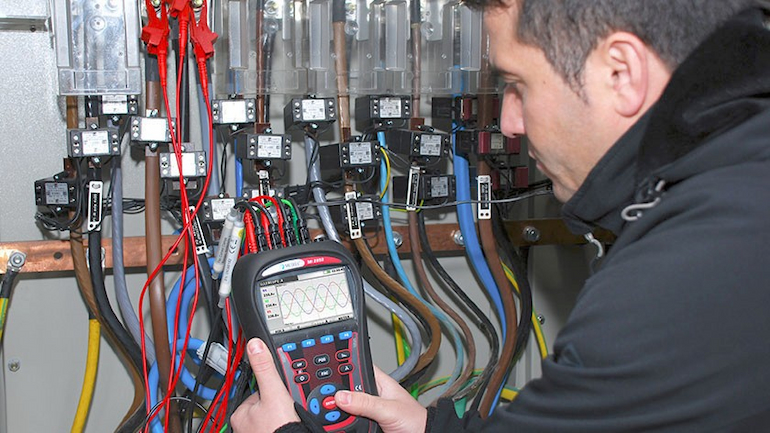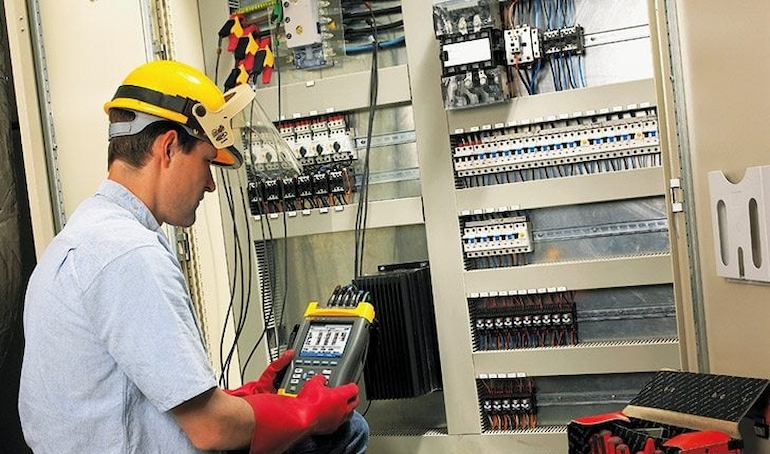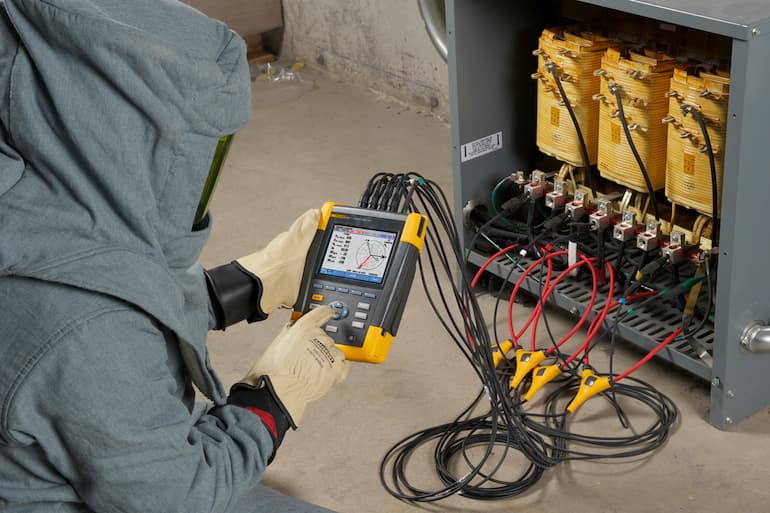Power Quality Analysers: An Essential Piece of Equipment for Power Maintenance
Although power quality analysis isn’t something that most businesses concern themselves with, it touches everything they do. When lights and fuses are blowing out regularly, and entire facilities are experiencing equipment failures and outages, these are indicators that a thorough power quality analysis is in order.
Power quality analysis determines how safely, reliably, and efficiently electricity voltage is being distributed throughout a system. More specifically though, it’s a critical measurement of whether or not a system’s voltage is stable and within its intended specifications. At best, poor power quality symptoms like flickering lights and computer shutdowns are a persistent inconvenience; at their worst, however, electrical equipment and entire digital systems can be fried in an instant by voltage instability.
In short, if you’re a plant or facility manager, you need to have a power quality strategy in place that includes having the technical staff and power quality testing equipment available to perform regular power quality analysis. The risks are too high not to be proactive about power analysis, and the results might surprise you.
Power Quality Analysers Round Out Your Power Quality Strategy

Let’s be honest: with the possibility for unstable, or out-of-spec voltage delivery to occur at any time, having a professional power analyser meter on-hand for your business at all times is the only way to be proactive about power quality analysis. Single, dual, and triple phase analysers are designed to measure and evaluate the reliability of the voltage in your power system, and to log and alert you whenever a range of potential problems and voltage anomalies, including:
- Spikes and surges. Short, quick-duration voltage increases that are beyond the system’s output specification.
- Sags. Decreases in system voltage can have either short or sustained durations.
- Harmonics. A change in the frequency of the voltage waveform is known to cause sustained voltage increases.
- Flicker. A rapid, rhythmic fluctuation in the voltage waveform that’s essentially a voltage drop throughout the entire system.
- Under- and over-voltage. A sustained, hazardous increase or decrease in system voltage can damage the system itself.
The fact is, unless any of these problems can be easily, knowingly, and calculably attributed to a dedicated source (powerful electric motors, an arc furnace, etc.), their scale and duration can worsen, and costly damage to your equipment and the power infrastructure can take place at any moment. That’s why having a good power quality analyser and a comprehensive power quality strategy are absolutely vital to isolating power problems before they escalate.
Portable Professional Power Meters Give You All the Features You Need

Unlike clamp meters or digital multimeters, modern power quality analysers bring a whole new layer of operational and technical capabilities to a business’s ability to analyse and measure its power quality. In spite of their relatively small size, the physical features of high-end analyzers typically include:
- Touchscreen LCD display screens for easier operation and analysis;
- Multi-coloured functionality for all on-screen menu and analysis presentations; and,
- The ability to operate in temperature ranges from 0°C – 45°C, at 85% relative humidity.
Ideally, the size and flexibility of a professional power quality meter allows an operator to bring it into tight spaces, or to set the unit up to take uninterrupted measurements autonomously and to recover it later. The standard range of simultaneous power and electrical measurements and records are equally robust, and cover a wealth of features that include:
- Active, reactive, and apparent power;
- Environmental temperature and humidity;
- Power factor (cosΦ);
- Active and inactive energy;
- Energy generation and consumption (kVAh, VARh, and kWh);
- RMS voltage and current; and,
- Phase angle.
Suffice it to say, when it comes to limiting your organization’s exposure to the costly and potentially hazardous impact of an unstable power system, there’s no substitute for having a proper, portable power quality analyzer to get the measurements you need.
A Range of Meters With Most Data Under the Most Demanding Conditions
At the higher performance end, power quality meters can also boast an array of advanced features that not only enable the necessary proactive power quality analysis, they also power consuming entities to improve their overall power consumption picture. Some analysers have as many as 40 different enhanced measurement parameters, and among them, you’ll find:
- Flicker and inrush current;
- Neutral line current;
- Voltage and current visualizations in waveform and phasor diagrams;
- Harmonics measurement up to the 50th order; and,
- Overall compliance with EN50160 standards for power quality and grid standards.
The sturdiest-built analysers even feature shock-resistant, IP67-rated cases which, along with their ability to be closed when in operation, are the perfect solution for identifying and resolving power quality problems no matter where they are.
Get the Full Record of Your Power Quality Analysis Anytime You Need It

Make no mistake: for many organizations and companies, accumulated losses in productivity tend to be the first quantitative indicator of power quality problems that have grown beyond the scope of their control. More often than not, the decision to invest in power quality measurement equipment is more likely to be based less on their own power distribution expertise than it is on their ability to capture and record power data that can be turned over to parties who are appropriately licensed and authorized to fix the problems.
Fortunately, top-tier power quality measurement analyzers are able to capture an extensive amount of power event and trend information for analysis and review under these circumstances, and the extent of those captures can include:
- Planned shutdowns and outages;
- Power increase and decrease events; and,
- Transient power occurrences and alarms.
They also offer a wide variety of ways and formats to preserve analysis results, including:
- Screen snapshot captures;
- Continuous event recordings; and,
- Simultaneous Bluetooth transfers.
Some power quality monitoring system analysers can even continue to capture and preserve this data for months, ensuring that no matter when you’re ready to retrieve it through an SD card, transfer it to a PC or laptop by USB, or possibly even Bluetooth, the data will be available for you.
The Final Word
At the end of the day, it’s important to remember that an effective power quality strategy is all about being proactive. Power networks needed to be analysed fully and regularly for both seen and unseen problems, but you have to have the correct equipment to do it properly.
Ensuring that your organization has a professional power analyser meter on-hand at all times, along with the qualified staff to operate it, is the only way to administer an effective power quality strategy. Lesser voltage meters can’t give you the accurate, reliable results you need, and only the most accurate, real-time results will do when it comes to the safe, efficient use of electricity.

